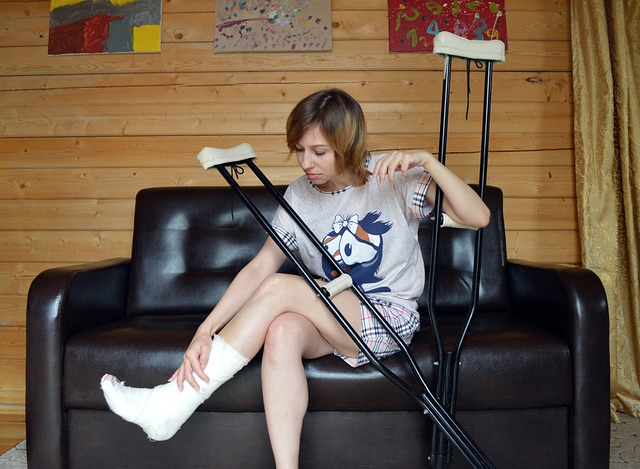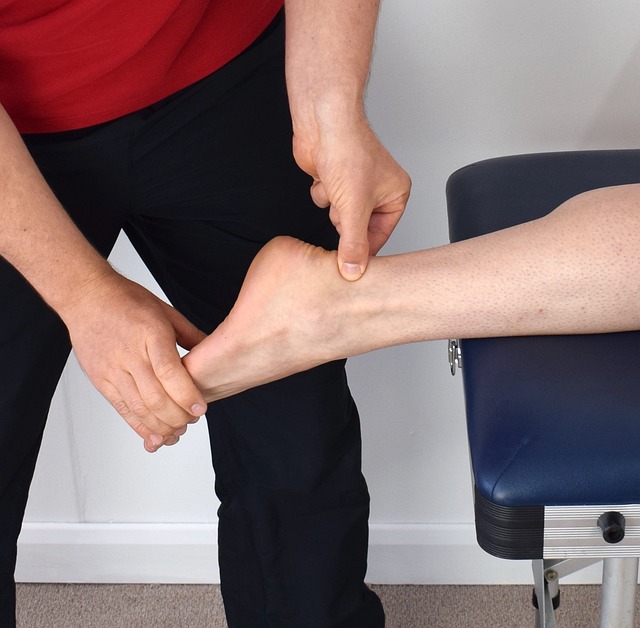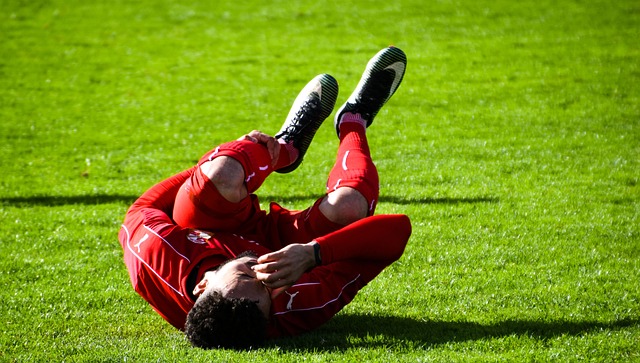You’re not alone if injuries from running keep you sitting on the couch instead of counting kilometers. Every year, an estimated 50% of regular runners are injured. Injury can occur due to trauma from falling or sprained ankle, but the most prevalent cause of running injuries is overuse.
Repetitive stress is responsible for more than 80% of running injuries, according to a 2015 study published in the peer-reviewed journal PLOS One.
Though most of these injuries are minor and can be treated with a visit to a healthcare practitioner or by making training tweaks, some are more serious and can keep you out of the game (and frustrated) for weeks or months.
Given that one in every three frequent runners will incur an injury at some point in their lives, it is unlikely that you will be able to completely avoid injuries. Fortunately, there are several precautions you may take to avoid or lessen the severity of running overuse injuries. Continue reading to learn about the most frequent running injuries and what you can do to avoid them.
Shin Splints are very common.
Shin splints (tibial syndrome) are a type of running injury induced by overuse that causes discomfort and stiffness along the tibia (the large bone in your lower leg). Because their leg muscles aren’t as developed or acclimated to the force imposed on them when running, new runners are more likely to acquire shin splints. Shin splints, on the other hand, can affect both rookie and expert runners.
There are several causes of shin splints among runners and one of the common injuries from running. One explanation is when mileage or intensity is increased abruptly, the body just doesn’t have time to adapt to the additional distance, and the body lets you know through shin splints. The following issue is failing to change shoes when necessary. People may wear their shoes well beyond their life cycle, which might cause complications.
Treatment and Prevention Increasing your jogging cadence is one of the best strategies to prevent shin splints (also called your step rate). This minor modification to your jogging reduces stride length, reducing the impact on your tibia. Wear good running shoes with adequate support to lower the impact on your legs and reduce your risks of developing shin splints.
Allowing for proper healing time is the best thing you can do if you have shin splints. Shin splints can proceed to stress fractures if you continue to run without resting your legs. For optimum recuperation, experts recommend at least 7 to 10 days of rest. Ice massages, ultrasound therapy, compression stockings, leg strengthening exercises, and stretching are all treatment options for shin splints.
Ailment Sprained Ankle
Ankle sprains are the most common lower-limb injury among athletes, accounting for between 16 and 40% of all sports-related injuries. This injury happens when one or more ligaments on the outside of the ankle are strained, partially ripped, or fully torn (worst-case scenario).
Turning the ankle when running or walking is the most prevalent cause of sprained ankles. Sometimes this is minimal, and you can roll your ankle, shake it off, and keep running. Other sprains are more severe, resulting in discomfort and swelling following the injury.
Treatment and Prevention Do activities that strengthen the muscles and ligaments around your ankle and boost your flexibility, balance, and coordination to reduce your chances of spraining your ankle when jogging. Ankle circles, ankle alphabet (writing the entire alphabet), shin raises, calf raises, and single-leg balance exercises are just a few examples.
If you roll your ankle and sprain it, treat it straight away by compressing it and reduce swelling by wrapping it with a bandage and icing it. Rest as much as you can and as long as it takes for your ankle to feel strong enough to run again.
Muscle Strain
Most people, including runners, have had a pulled muscle at some point in their lives. Injuries to the hamstring muscle are among the most common among athletes, and they typically occur during jogging. Furthermore, hamstring strains account for 12 to 16% of all sporting injuries, with a recurrence rate of 22 to 34%. The quadriceps, calf, and groin are all frequently impacted by this sort of injury.
Muscle gets pulled when it is forced to work too hard or is overloaded as a result of improper mechanics. They can arise as a result of running on tired or tight legs, increasing the intensity of your run by sprinting, significantly increasing distance, or running uphill without first enabling your body to adapt appropriately.
Treatment and Prevention Most muscular strain injuries are treatable with rest and strength training. A decent warm-up before jogging can also help you avoid straining a muscle. Warm-ups raise muscle temperature and blood flow, which improves exercise performance and lowers the risk of muscle and tendon injuries.
Weaker muscles are more prone to muscular pulls than stronger muscles. Adopting a strength training routine will strengthen your muscles and make them more resistant to pulls.
IT Band Syndrome
IT band syndrome is another common overuse condition that many runners suffer from. The IT band is called the iliotibial band, and it is a thick band of tissue that extends outside your thigh, from your hips to the top of your shins.
When you regularly bend and extend your leg, such as when jogging, your IT band glides over your thigh bone. This movement can cause excessive tension on your IT band and hip or knee pain over time.
IT band syndrome is frequently caused by weak gluteus (buttock) muscles. Women are more prone to this type of injury because their larger hips stress the IT band, stimulating inflammatory tissue.
Treatment and Prevention If you have IT band syndrome-related knee or hip discomfort, ice the affected area for 10 to 15 minutes at a time. Using a foam roller around the front, back of your thighs, and outer hips can also help ease discomfort and tightness. Do this on a daily basis to maintain the muscles to which your IT band is attached and to minimize excessive pulling on your hips and knees.
To avoid IT band syndrome, avoid running on uneven surfaces, wear appropriate running shoes, and undertake glute, core, and hip strengthening exercises to alleviate the load off your IT bands.
Runner’s Knee
Runner’s knee is characterized by a dull, agonizing discomfort in the front of the knee. Some runners may report kneecap pain and a rubbing, grinding or clicking sound. Because knee pain can be caused by a variety of circumstances, consult a physiotherapist or sports medicine physician to get it diagnosed and rule out other probable causes.
You can get a runner’s knee if you rapidly increase in training volume or intensity, have insufficient recovery time, or have a weak or tight quad, thigh, or hip muscles. If you have weak and tight muscles around the knees, you can sustain a bigger stress burden with jogging. In addition, an ankle, hip, or knee injury can alter the biomechanics of the knee, eventually leading to a runner’s knee symptoms.
Treatment and Prevention Adopting a strength training plan to supplement your running, like most other running-related problems, can help prevent and treat a runner’s knee. Bodyweight squats, lunges, kneed bends, and single-leg and straight-leg lifts are all great knee workouts for runners.
Kendter recommends gradually increasing your running volume and intensity rather than abruptly increasing them. Wearing appropriate running shoes will aid in shock absorption and lessen knee impact. In addition, concentrating on running cadence with a high turnover rate will reduce ground contact time.
Fracture Due to Stress
A stress fracture is another overuse condition that is common among regular runners. These are microscopic hairline cracks generated by repetitive strain in load-bearing bones (typically in your leg or foot).
This ailment frequently happens when your running mileage is increased too soon and your bones aren’t prepared for the hard impact of daily jogging. That is why it is critical to gradually increase your running volume in order for your bone strength and density to increase.

Bone density disorders put some persons at a higher risk for stress fractures and malnutrition. Eat a balanced diet rich in nutrients to keep your body and muscles happy, such as calcium and vitamin D, to help prevent stress fractures.
Treatment and Prevention If you feel you have a stress fracture, consult a doctor to get it diagnosed. Rest and avoid jogging or any high-impact activity on the damaged bone are the greatest things you can do. Running with a stress fracture can have an impact on your running technique and lead to further injury.
You can also avoid stress fractures by consuming a calcium and vitamin D-rich diet. These nutrients are crucial for bone health, and consuming enough of them through whole foods and supplementation will help you naturally enhance your bone density.
Plantar Fasciitis
Plantar fasciitis is a frequent condition among runners that you’ve probably heard of. This is an inflammation of the plantar fascia, a tissue in the foot that is used during movement, such as walking or running.
This injury can be caused due to a rapid rise in mileage, high arch, tight calf muscles, poor footwear, and strength imbalances can all induce plantar fasciitis.
Treatment and Prevention According to Kendter, you can prevent plantar fasciitis by gradually increasing your mileage by 10% per week. She also adds that shortening your stride length and boosting your running cadence will reduce the impact on your feet and assist in preventing injury.
In addition, if you have plantar fasciitis, you can treat it by completing barefoot exercises to strengthen your feet, heels, and legs. You may also use a lacrosse ball to massage the bottom of your foot and a foam roller to roll out your calves. These exercises will increase blood flow to the problem area and loosen tight calf muscles, which will help decrease plantar fasciitis discomfort.
Tendonitis of the Achilles
Achilles tendonitis is an inflammation and swelling of the thick tendon which connects your calf muscles to your heel. Tight calf muscles is discomfort or one of those injuries from an increase in running time and intensity without adequate rest.
“Achilles tendonitis symptoms include soreness on the bottom of the foot near or on the heel, “Hislop notes. “Some describe it as a stabbing sensation, while others describe it as a bruise. Most people, however, experience it when they first get out of bed in the morning.”

Treatment and Prevention When treating achilles tendonitis symptoms, strength and stretching activities are recommended. Calf-strengthening workouts can help your muscles absorb more impact and keep you safe. Calves can be loosened and ankle mobility improved by foam rolling. Other techniques include gradually increasing your jogging volume, wearing supportive footwear, and resting if you experience pain.
Morton’s Neuroma is a type of tumor.
This ailment is characterized by aggravation or injury to the nerve between your toe bones, which is frequently caused by foot trauma (such as recurrent foot striking during running) or wearing narrow footwear that puts continual pressure on your feet.
Nerve inflammation is most commonly found between your second and third toes. However, it can also occur between your second and fourth toes. While running, this frequently produces numbness, discomfort, or tingling in the foot or toes.
Treatment and Prevention Experts recommend wearing properly fitting running shoes with a wide toe box to prevent and treat interdigital nerve irritation.
Adequate shoe width is necessary to prevent side-to-side forefoot compression. You can also use a metatarsal pad under the foot to ease the pressure.
To Conclude
Running on a daily basis is an excellent strategy to boost fitness, remain active, increase longevity, strengthen bones, and improve cardiovascular health. However, doing too much too quickly, not allowing for adequate recuperation, and failing to warm up can result in a variety of overuse injuries ranging from knee pain to torn muscles and foot problems.
Take precautions to avoid these frequent running injuries, and you’ll be able to run consistently and without injury for years to come. If you feel you have an overuse injury caused by running, consult your healthcare professional before increasing your running volume and intensity.

